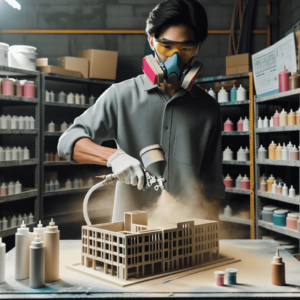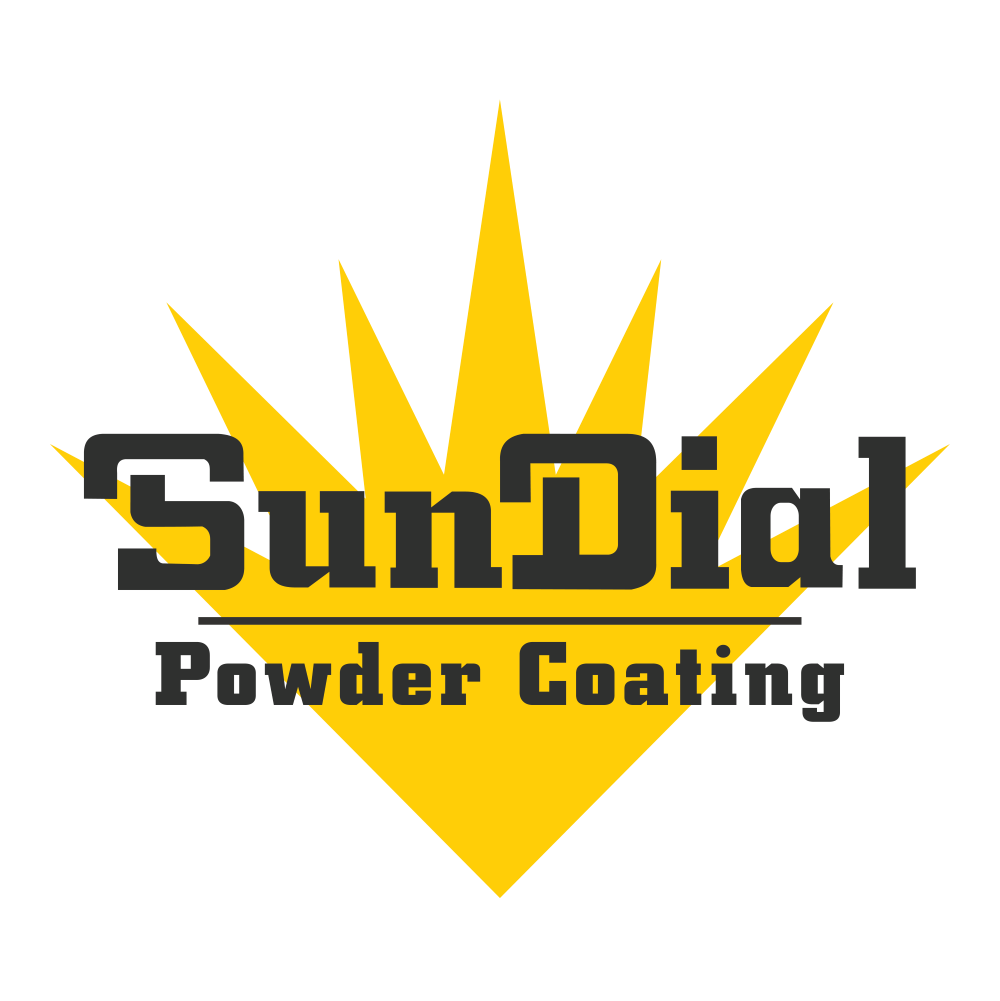In the ever-evolving field of architecture, sustainability has emerged as a defining principle, shaping the way buildings are designed, constructed, and maintained. As construction practices continue to adapt to the demands of the environment, the utilization of sustainable materials and technologies has become paramount. Within this context, architectural powder coating has emerged as a transformative innovation that not only redefines the aesthetics of built structures but also enhances their durability. This article explores the sustainable innovations in architectural powder coating, highlighting their immense potential in creating environmentally responsible and visually striking architectural designs. By examining the intersection of sustainability, aesthetics, and durability, we aim to provide a comprehensive understanding of how architectural powder coating is revolutionizing the architectural landscape.
1. The Advantages of Sustainable Architectural Powder Coating: Enhancing Aesthetics and Durability
Sustainable architectural powder coating offers numerous advantages that enhance both aesthetics and durability. By utilizing this eco-friendly and advanced coating method, buildings can enjoy a multitude of benefits:
- Improved longevity: Sustainable architectural powder coating provides a durable protective layer that extends the lifespan of exterior surfaces. This coating effectively shields buildings against the damaging effects of UV rays, moisture, and corrosion, resulting in increased resistance to fading, cracking, and peeling.
- Wide range of colors and finishes: With sustainable architectural powder coating, the possibilities for design and creativity are limitless. The coating is available in a vast selection of vibrant colors and finishes, allowing architects and designers to achieve their desired aesthetic vision. Whether it’s a sleek modern look or a more traditional feel, this coating method offers a solution for every architectural style.
- Greater environmental friendliness: One of the key advantages of sustainable architectural powder coating is its minimal impact on the environment. Unlike traditional liquid coatings, powder coating releases zero volatile organic compounds (VOCs) into the atmosphere, reducing air pollution and contributing to a healthier eco-system. This makes it an excellent choice for architects and builders striving for green building certifications.
- Resistance to chipping and scratching: The tough and resilient nature of sustainable architectural powder coating provides superior resistance to chipping and scratching. This ensures that painted surfaces maintain their pristine appearance even in high-traffic areas or locations subject to frequent contact or impact.
In conclusion, sustainable architectural powder coating elevates both the visual appeal and durability of structures. With its enhanced longevity, wide range of colors and finishes, environmental friendliness, and resistance to chipping and scratching, this advanced coating method is a game-changer in the world of architecture and design.

2. Environmentally-Friendly Solutions: Reducing Carbon Footprint in Architectural Powder Coating
Architectural powder coating plays a significant role in the construction industry, providing a durable and attractive finish to building structures. However, the use of traditional powder coating methods often results in a substantial carbon footprint, contributing to environmental degradation. To combat this issue, there is an increasing demand for environmentally-friendly solutions that can effectively reduce the carbon footprint associated with architectural powder coating.
One such solution is the utilization of eco-friendly powder coatings that are formulated using sustainable materials. These coatings are free from harmful substances such as heavy metals and volatile organic compounds (VOCs), minimizing the environmental impact during application and throughout the lifespan of the coating. In addition to being non-toxic, eco-friendly powder coatings also offer excellent performance characteristics, including superior adhesion, UV resistance, and durability.
Reducing the carbon footprint in architectural powder coating is not limited to the type of coating alone. The implementation of efficient and eco-friendly application methods further contributes to a more sustainable coating process. Utilizing advanced application techniques such as electrostatic powder coating can significantly reduce over-spraying, resulting in less wasted material and energy consumption. This method also allows for a more uniform coating thickness, ensuring optimal product performance while minimizing material usage.
3. Material Innovations for Enhanced Durability: Exploring Sustainable Options
The quest for more durable materials has led to remarkable innovations that not only bolster product lifespan but also foster sustainability. Today, engineers and scientists are pushing the boundaries of what is possible, exploring novel materials that offer exceptional durability while minimizing environmental impact. Here, we delve into some of the groundbreaking sustainable options that have emerged:
Bio-based Composites:
- Developed using renewable resources such as plant fibers, these composites exhibit impressive resistance to wear and tear.
- They offer high strength-to-weight ratios, making them ideal for applications in industries like automotive and construction.
- By utilizing bio-based composites, we reduce our reliance on fossil fuels and mitigate the carbon footprint associated with traditional materials.
Self-healing Polymers:
- As the name suggests, self-healing polymers possess the extraordinary ability to repair themselves when damaged.
- These materials incorporate microcapsules that rupture upon impact, releasing healing agents to mend the fracture.
- By extending the lifespan of products, self-healing polymers contribute to a circular economy by minimizing waste generation and promoting long-term resource efficiency.
The realm of material innovations offers countless possibilities, with sustainable options like bio-based composites and self-healing polymers leading the charge in enhanced durability. As engineers continue to explore and refine these choices, our future seems promising, paving the way for products that are not only long-lasting but also eco-friendly.
4. Nurturing Longevity in Architectural Powder Coating: Best Practices and Recommendations
When it comes to architectural powder coating, ensuring the longevity of the coating is crucial for the overall aesthetic appeal and durability of a structure. To achieve exceptional results, follow these best practices and recommendations:
1. Choose high-quality powder coatings: Investing in top-notch powder coatings not only enhances the visual appeal of architectural structures but also improves their durability. Select powder coatings that have excellent weathering resistance and can withstand UV radiation, humidity, and other environmental factors.
2. Proper surface preparation: Adequate surface preparation is paramount to the longevity of powder coatings. Before applying the coating, make sure the surface is thoroughly cleaned and free from any contaminants such as dust, oil, or grease. This can be achieved through processes like chemical cleaning, sandblasting, or etching, ensuring a strong bond between the surface and the powder coating.
3. Implement suitable pretreatment processes: Applying an appropriate pretreatment process is vital to enhance the longevity of architectural powder coatings. Depending on the substrate material, consider using pre-treatments such as phosphating, chromating, or anodizing. These processes create a protective layer, improving the adhesion and corrosion resistance of the powder coating.
4. Optimum curing conditions: Proper curing of the powder coating is essential for its longevity. Ensure that the coating is cured at the recommended temperature and duration, as specified by the manufacturer. Inadequate curing can lead to premature coating failure and reduced lifespan.
5. Regular inspection and maintenance: To extend the lifespan of architectural powder coatings, periodic inspection and maintenance should be performed. Regularly examine the coating for any signs of damage, such as chipping, flaking, or discoloration. Promptly address any issues to prevent further deterioration and maintain the coating’s integrity.
By adhering to these best practices and recommendations, architects, contractors, and property owners can nurture the longevity of architectural powder coatings, ensuring aesthetically pleasing and durable finishes for years to come.
Q&A
Q: What is architectural powder coating?
A: Architectural powder coating is a specialized application technique used in the architectural and construction industry to provide an aesthetic and durable finish to various metal surfaces.
Q: How does architectural powder coating differ from traditional painting methods?
A: Unlike traditional paint, architectural powder coating involves the electrostatic application of a dry powder to the metal surface, which is then cured under heat to create a long-lasting and durable finish.
Q: What are the advantages of using architectural powder coating?
A: Architectural powder coating offers several benefits, including excellent durability, resistance to chipping, scratching, and fading, enhanced aesthetics, cost-effectiveness, and reduced environmental impact.
Q: How does architectural powder coating contribute to sustainability?
A: This innovative coating solution contributes to sustainability by reducing volatile organic compounds (VOCs) emissions, minimizing waste through powder reclamation, and eliminating the need for solvents. It also provides a longer lifespan, reducing the need for frequent recoating or replacement.
Q: What are the aesthetic options available with architectural powder coating?
A: Architectural powder coating offers a wide range of aesthetic options, including various colors, finishes (gloss, matte, textured), and special effects (metallic, hammertone), allowing architects and designers to achieve their desired look while ensuring durability.
Q: Can architectural powder coating be applied to different substrates?
A: Yes, architectural powder coating can be applied to a variety of metal substrates, such as aluminum, steel, zinc, and galvanized steel, making it suitable for use in different architectural and construction applications.
Q: Is architectural powder coating resistant to harsh weather conditions?
A: Yes, architectural powder coatings are designed to withstand various weather conditions, including UV radiation, humidity, rain, snow, and temperature fluctuations. This ensures the long-term protection and visual appeal of coated surfaces.
Q: How long does architectural powder coating last?
A: The lifespan of architectural powder coating depends on factors such as environmental exposure, maintenance, and the quality of the coating. However, with proper application and maintenance, architectural powder coating can last for many years, providing a durable and attractive finish.
Q: What considerations should architects and designers keep in mind when using architectural powder coating?
A: When selecting architectural powder coating, architects and designers should consider factors such as the project’s environmental conditions, expected life span, desired aesthetics, substrate compatibility, and the coating manufacturer’s reputation and warranty.
Q: Are there any ongoing research and developments in the field of architectural powder coating?
A: Yes, the field of architectural powder coating is continuously evolving with ongoing research and development. This includes innovations in new powder formulations, advanced application techniques, improved curing processes, and enhanced environmental sustainability.
Concluding Remarks
In conclusion, sustainable innovations in architectural powder coating have revolutionized the way we approach aesthetics and durability in the field of architecture. By embracing environmentally friendly practices and utilizing advanced technologies, architects and designers are able to create structures that not only enhance the visual appeal of our surroundings but also stand the test of time.
Through the use of low volatile organic compounds (VOC) and eco-friendly materials, powder coating has emerged as a sustainable solution for architectural applications. Not only does it minimize the release of harmful emissions into the environment, but it also contributes to the reduction of waste, making it a responsible choice for construction projects.
Furthermore, the durability of powder-coated surfaces surpasses traditional coating methods, making them highly resistant to factors such as weathering, corrosion, and fading. This longevity greatly reduces the need for frequent maintenance and repainting, resulting in significant cost savings over the lifespan of a building.
Additionally, architectural powder coatings offer a wide range of color choices and finishes, allowing designers to unleash their creativity and redefine aesthetics in the construction industry. From vibrant hues to subtle textures, these coatings provide endless possibilities for architectural expression while maintaining their superior performance.
As architectural trends continue to prioritize sustainability and environmental responsibility, the adoption of powder coating as a preferred architectural finish is expected to grow significantly. The combination of enhanced aesthetics, durability, and eco-consciousness has positioned powder coating as an innovative and intelligent solution for architects and designers worldwide.
By embracing sustainable innovations in architectural powder coating, we are not only redefining the way our buildings look, but also making a positive impact on our planet. Through responsible choices and advanced technologies, we can create a more sustainable and aesthetically pleasing future for generations to come.
